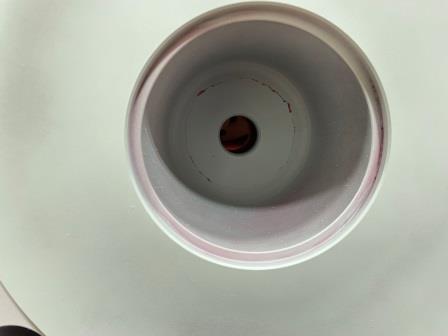Liquid Penetrant Testing Acceptance Criteria
Liquid penetrant testing acceptance criteria depend on the construction code. For example, if a pressure vessel such as a reactor, heat exchanger, drum, process tower subjected to the test, then acceptance criteria can be found in the ASME Code Section VIII Div. 1 Appendix 8. If you are doing a penetrant test on steel structure, then you should look for acceptance criteria in the AWS D1.1
Liquid Penetrant Testing Acceptance Criteria Based on ASME VIII Div 1 Appendix 8
The ASME Code Section VIII Div. 1 Mandatory Appendix 8 covers the acceptance criteria for Penetrant testing on the weld. Please note API codes for rotating equipment also refer to this code. For instance, if you are performing a liquid penetrant testing on pipe weld to pump casing and you find an indication, then you need to refer to appendix 8 of the code mentioned above for evaluation since the API 610 does not directly address the acceptance criteria issue.

The I4I Academy covers Liquid Penetrant Testing Acceptance Criteria in the API 510 pressure vessel inspector course for pressure vessel application. The API 570 piping inspector course for process piping Liquid penetrant test. The above-ground storage tank application is covered by our API 653 above-ground storage tank inspector training course. API 510 refers to ASME VIII Div.1, API 570 refers to ASME b31.3, and API 653 refers to API 650. This subject is also covered in the API SIFE course.
As per appendix 8, any indication greater than 1/16 in (1.5
mm) shall be considered a relevant indication. You may ignore any indication
that might be less than this value. It divides the indication into two groups
as follows:
Rounded indications: any relevant indication (it means if its major dimension is greater than 1/16 (1.5 mm) ) shall be considered rejected if it is greater than 3/16 in (5 mm)
Linear or elongated indication: all elongated indication are rejected regardless of the size. An indication is elongated or linear when its length is three times of its wide.
As you see, there is more leeway for rounded indication. However, if several rounded indications existed in line and separated by a short distance, might be considered rejected indications.
Liquid Penetrant Testing Acceptance Criteria for Process Piping - ASME B31.3
The acceptance criteria exactly is as the same of ASME Section VIII Div. 1 Appendix 8. The criteria addressed in clause number 344.4.2 - Acceptance Criteria
Liquid Penetrant Testing Acceptance Criteria for Casting Used for Pressure Vessels and Rotating Equipment
The ASME Code Section VIII Div. 1 Appendix 7 addresses this issue. The code requires all cracks and hot tears to be rejected regardless of the size. The rounded indication can be considered rejected if the size is greater than 3/16 inch or 5 mm.
The linear indication depends on the thickness if the thickness is less than 0.75 inch then any linear indication greater than 1/4 inch will be considered unacceptable. If the thickness of the test object is between 0.75 and 2.25 inch, then max allowed linear indication is the 1/3 of the thickness.
An indication might be rejected based on one code or standard and might be acceptable based another code and standard.
The test evaluation and interpretation shall be done by qualified ASNT Level II or Level III liquid penetrant test technicians.
Free newsletter!
Sign up to receive my monthly newsletter covering all the latest courses and updates.




New! Comments
Have your say about what you just read! Leave me a comment in the box below.